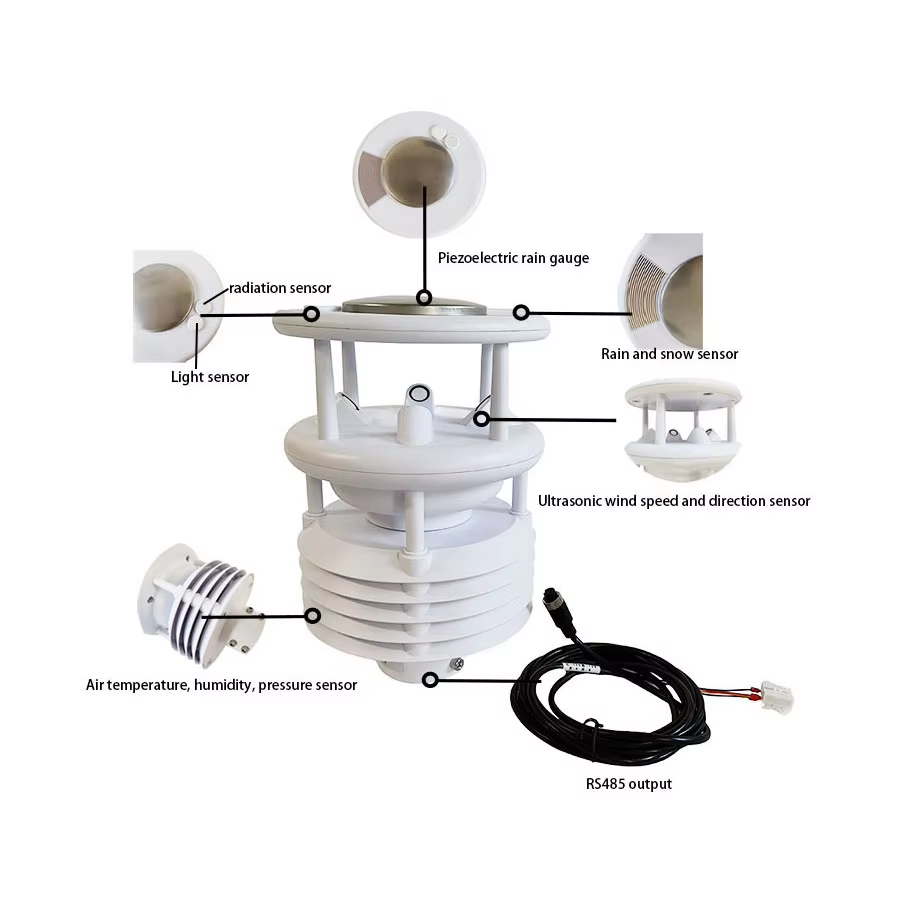Recently, the Swiss Federal Meteorological Office and the Swiss Federal Institute of Technology in Zurich have successfully installed a new automatic weather station at an altitude of 3,800 meters on the Matterhorn in the Swiss Alps. The weather station is an important part of the Swiss Alps high-altitude climate monitoring network, which aims to collect meteorological data in high-altitude areas and provide valuable information for scientists to study the impact of climate change on the Alps.
This weather station is equipped with advanced sensors that can monitor temperature, humidity, wind speed, wind direction, air pressure, precipitation, solar radiation and other meteorological elements in real time. All data will be transmitted to the Swiss Federal Meteorological Office’s data center in real time via satellite, and integrated and analyzed with data from other weather stations to improve weather forecast models, study climate change trends, and evaluate the impact of climate change on the alpine environment.
The head of the climate monitoring department of the Swiss Federal Meteorological Office said: “The Alps are a ‘hotspot’ of climate change in Europe, with a warming rate twice as fast as the global average. This new weather station will help us better understand how climate change affects the alpine environment, such as melting glaciers, degradation of permafrost, and increased frequency of extreme weather events, as well as the possible impacts of these changes on water resources, ecosystems and human society in downstream areas.”
A professor at the Department of Environmental Sciences of ETH Zurich added: “Meteorological data in high-altitude areas is crucial for understanding the global climate system. This new weather station will fill the gap in meteorological monitoring in high-altitude areas of the Alps and provide scientists with valuable data for studying the impact of climate change on alpine ecosystems, water resource management and natural disaster risks.”
The completion of this weather station is an important measure for Switzerland to strengthen climate monitoring and adapt to climate change. In the future, Switzerland also plans to build more similar weather stations in other high-altitude areas of the Alps to build a more complete alpine climate monitoring network to provide a scientific basis for responding to climate change challenges.
Background information:
The Alps are the largest mountain range in Europe and a sensitive area for climate change in Europe.
Over the past century, the temperature in the Alps has risen by about 2 degrees Celsius, twice the global average.
Climate change has led to accelerated melting of glaciers in the Alps, degradation of permafrost, and increased frequency of extreme weather events, which have serious impacts on local ecosystems, water resource management and tourism.
Significance:
This new weather station will provide valuable data to help scientists better understand the impact of climate change on the Alps.
These data will be used to improve weather forecast models, study climate change trends, and assess the impact of climate change on the alpine environment.
The completion of the weather station is an important measure for Switzerland to strengthen climate monitoring and adapt to climate change, and will provide a scientific basis for addressing the challenges of climate change.
Post time: Feb-13-2025


